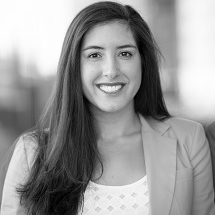

One of the most engaging panels at this year’s DRI Asbestos Medicine Conference was “Eliciting Evidence of Exposure to Bankrupt Products at Deposition”, prepared and facilitated by Mary Margaret Gay of Gay Jones & Kuhn and Jim Lowrey of Gordon & Rees. The presentation was delivered as a mock plaintiff deposition and offered many practical tips to use when examining fact witnesses with the focus on keeping the products of bankrupt companies in evidence. As is well established, once an asbestos defendant declares bankruptcy and can no longer be sued in the tort system, that defendant not only generally disappears from complaints, but also, mysteriously, from deposition testimony.
Most of the main asbestos product manufacturers are long bankrupt, but now they are often not mentioned at all when a plaintiff is detailing his/her exposure. The panel offered this comparison – imagine Coca Cola, by far the biggest market share of soda products, goes bankrupt. Then, in 10 years, someone asks a plaintiff in deposition if they ever drank Coke and that plaintiff answered, “I don’t recall, I think I only ever drank Fanta”. This is the problem that defense counsel face when trying to get facts about the plaintiff’s alternate exposures in deposition. Short of putting on an expert at trial, the deposition is the last chance to get an admission from a plaintiff of exposure to a bankrupt product. Plaintiffs’ counsel has numerous disincentives to making the identification of such alternative exposures, making it an uphill struggle for defendants.
The panel offered a number of areas for defense counsel to be more detailed in questioning in order to get more information about a plaintiff’s alternative exposures Some examples demonstrated were:
Don’t just settle for “I was in the Navy for five years” – ask what base, which ships, where training occurred, what locations at the base and ships did he frequent (engine room, mess hall, infirmary/hospital, etc.) as different bankrupt companies’ products will be at each detailed location within the site.
The panel paused the mock deposition multiple times to stress the importance of using product pictures to help a plaintiff remember what products he/she was exposed to. The key is to use anecdotes and visual aids to help the plaintiff recall their other exposures. During the panel, these included photos of pipe insulation from a particular part of a specific ship, as well as of the packaging for the bonding component he used during home renovations.
Oftentimes, the plaintiff’s attorney will allege there is no product exposure after 1980. It is important to continue deposing the plaintiff at this point, as there is a high likelihood that further questioning will lead to identifying alternative exposures. Many bankruptcy trusts only require that the plaintiff demonstrate they were at a location to pay out a claim. Exposure is simply presumed.
Always make sure to ask the plaintiff, “to your knowledge, do you have any other attorneys?” It is not uncommon for there to be multiple lawyers working with the plaintiff, a litigation or case counsel to handle claims in the tort system and a bankruptcy trust counsel to file claims with the trusts. Sometimes neither the litigation counsel nor the plaintiff is aware of the bankruptcy trust claims that are made in order to create a separation. However, in other instances the plaintiff may answer with references to “asbestos checks” which are usually synonymous to bankruptcy trust payments.
Researching bankruptcy trust information to identify alternative exposures can be a time-consuming process, especially considering the mass of data provided by each trust and its constantly evolving nature. Utilizing technology, such as KCIC’s Bankruptcy Evidence Verification (BEV) tool, can be a resource to quickly identify potential jobsites, product exposures, and obtain pictures, all at the click of a button. We echo the panel’s sentiment of the importance in using bankruptcy trust information throughout the discovery process.
Then, begin investigating potential alternative exposures from the point of receiving the complaint and interrogatory answers. Continue to develop those at the deposition, especially with pictures to provide context. KCIC’s centralized database of bankruptcy trust information houses thousands of data points to help research these exposures. And we are always happy to share insight on how to utilize this information in discovery.
The overarching theme the panel focused on was the importance of deliberate and thoughtful preparation, where one has a foundational understanding of where and how a plaintiff may come into contact with the products of bankrupt companies. That way, the proper context can be provided during a deposition to bring about a connection between the plaintiff’s past and bankruptcy trusts.
The panel gave an example of a plaintiff who retired from the military and went to work at Disney World. Your first thought might be the military is an easy pick for asbestos exposure. Disney may not be the first place one thinks of when considering asbestos products; however, jobsites associated with Disney World are on many bankruptcy trust site listings. In fact, by simply identifying which areas the claimant had been around at Disney, the total allotted for a potential payout amounted to over $200k.
As exposures to bankruptcy trusts disappear from the record in the tort system, we hope to help defendants by equipping them with resources to help, such as our BEV tool. It is always in the interest of every defendant to keep bankrupt companies in evidence. If you are interested in learning more about our tool, please reach out to BEV@kcic.com.
Never miss a post. Get Risky Business tips and insights delivered right to your inbox.

Kathrin Hashemi has partnered with her clients on a variety of matters including litigation management, insurer billing arrangements, claims administration, and asbestos bankruptcy trusts. Much of her work has allowed her the opportunity to have a more holistic understanding of the litigation at hand, while simultaneously being able to solve complex problems for her clients.
Learn More About Kathrin